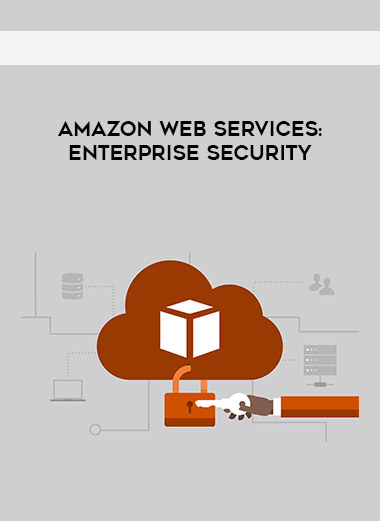
Amazon Web Services: Enterprise Security
Salepage : Amazon Web Services: Enterprise Security
Arichive : Amazon Web Services: Enterprise Security
Cloud computing isn’t just for startups. Many of the world’s leading companies, including GE and Dow Jones, run on the cloud, and they choose Amazon Web Services (AWS). If you’re tasked with implementing AWS at your organization, big or small, this is the course for you. Understanding security concepts is the gateway to using AWS as your enterprise solution.
Sharif Nijim couples pragmatic advice with practical examples that educate IT pros on how to create a secure infrastructure within Amazon Web Services. Sharif explores the shared responsibility model of security, which splits duties between your company and AWS, and introduces key identity and access management concepts, including users, groups, roles, and policies. Learn how to configure Identity and Access Manager (IAM) and Simple Storage Service (S3) access management, including policies and access control lists. At the end of the course, Sharif helps you prepare for the inevitable audit of your AWS account(s).
This course is also part of a series designed to help you prepare for the AWS Certified SysOps Administrator – Associate certification exam.
Topics include:
- Summarize the AWS Shared Responsibility Model.
- Recall how to implement separation of duties.
- Differentiate between assigning permissions to an individual versus a group.
- Summarize how to create IAM roles.
- Describe how to secure financial access.
- Recall the steps for managing access to S3 with IAM.
- Cite the advantages of a pre-signed URL.
What Is SEO traffic?
There are two types of website traffic:
- Organic traffic: This is traffic that you don’t pay for directly. It includes people who click through to your website from your social media pages, your email newsletter, Google’s search results, and so on.
- Paid traffic: This is traffic that you pay for directly. It includes people who click pay-per-click (PPC) ads, as well as those who hear about you through influencer marketing, newsletter or podcast sponsorships, and other forms of paid advertising.
SEO stands for search engine optimization, and is a process of optimizing your website with the goal of ranking higher on search engine results pages (SERPs) and ultimately increasing traffic.
In theory, the term SEO refers to all search engines, but in practice, it’s Google that matters most as they have an 87.35% share of the search market, with Bing being a very distant second at 5.53%, and Yahoo taking third place with 2.83% of the market.
SEO traffic is organic traffic that comes from search engines, in other words, people who typed a keyword or query into Google, looked through the search results, and then clicked through to your website.
Note that this doesn’t include paid search engine traffic, meaning those who entered a query into a search engine, and then clicked on your PPC ad that was displayed above the search results.
Amazon Web Services: Enterprise Security
Readmore About : Amazon Web Services: Enterprise Security







































Reviews
There are no reviews yet.